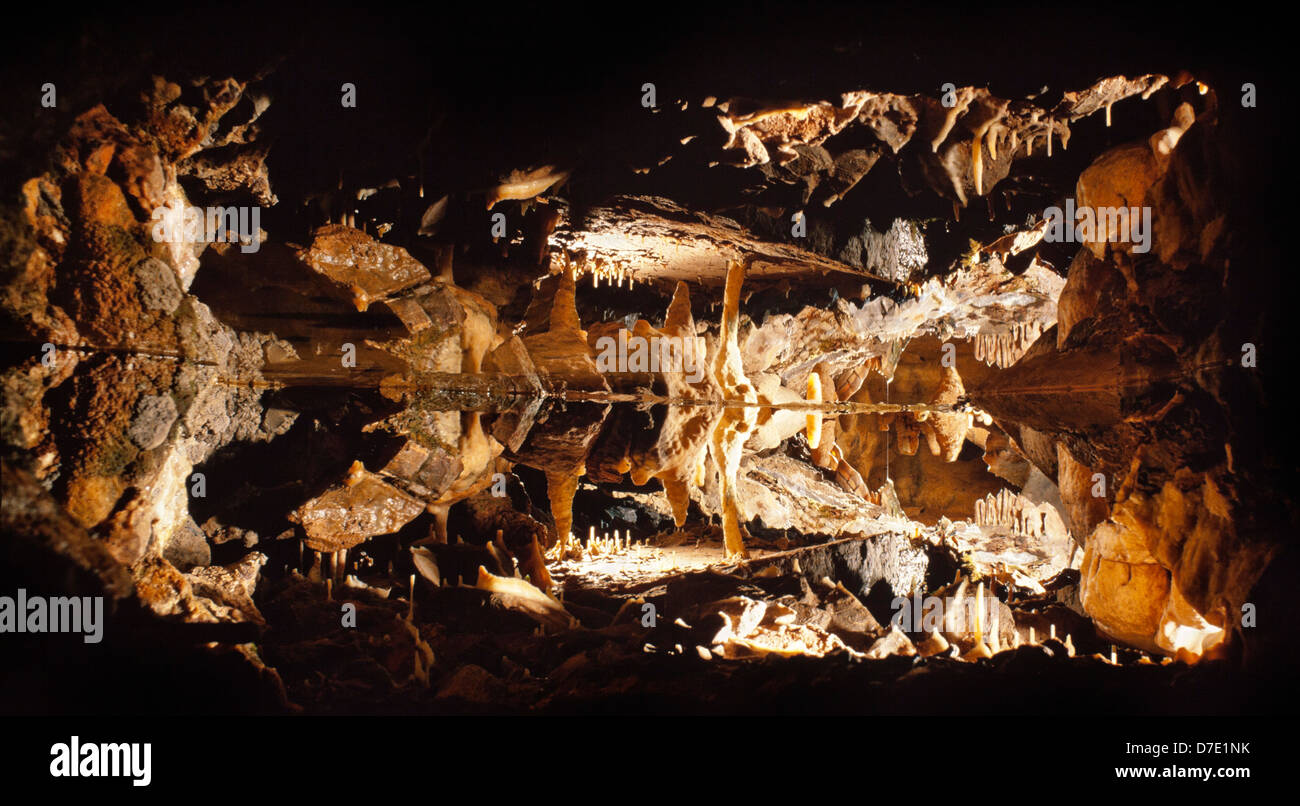Mirror water reflections in still underground pool, Gough's Cavern, Cheddar, UK. Limestone formations

Image details
Contributor:
Scenics & Science / Alamy Stock PhotoImage ID:
D7E1NKFile size:
32.8 MB (1.9 MB Compressed download)Releases:
Model - no | Property - noDo I need a release?Dimensions:
4558 x 2512 px | 38.6 x 21.3 cm | 15.2 x 8.4 inches | 300dpiDate taken:
4 May 2013More information:
Gough's Cave, found in the Cheddar Gorge, Mendip Hills, Cheddar, UK. The cave is 90 metres (295 ft) deep and is 2.135 kilometres (1.33 mi) long and contains a variety of large chambers and rock formations. It contains the Cheddar Yeo, the largest underground river system in Britain. The initial sections of the cave, previously known as Sand Hole, were accessible prior to the 19th century. Between 1892 and 1898 Richard Cox Gough, who lived in Lion House in Cheddar, found, excavated and opened to the public further areas of the cave, up to Diamond Chamber, which is the end of the show cave today. In 1903 the remains of a human male, since named Cheddar Man, were found a short distance inside Gough's Cave. He is Britain’s oldest complete human skeleton, having been dated to approximately 7150 BCE. There is a suggestion that the man died a violent death, perhaps related to cannibalism, although this has not been proven. Mitochondrial DNA taken from the skeleton has been found to match that of Adrian Targett, a man living in the local area today, indicating that Cheddar Man is a very distant ancestor. The remains currently reside in the Natural History Museum in London, with a replica in the Cheddar Man and the Cannibals museum in the Gorge. Other human remains have also been found in the cave. In 2007 a carving of a mammoth, estimated to be 13, 000 years old, was found in the cave. In 2010 further human bones from the cave were examined, which ultra-filtration carbon dating dated to around the end of the ice age 14, 700 years ago. A second technique, using the Alicona 3D microscope, showed that the flesh had been removed from the bones using the same tools and techniques used on animal bones. According to Professor Chris Stringer of the Natural History Museum this supports theories about cannibalism amongst the people living in or visiting the cave at that time.